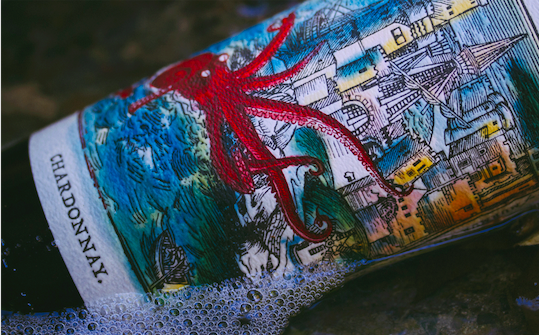
by Lorri | Sep 30, 2015 | UnCorked
We were honored to have Andrew Nelson of Rabble Wine Co. visit our state recently. After getting to know a little more about this company, the people behind it and the incredible taste of the wine, it could be your next favorite. It’s quickly becoming mine.
The name, Rabble Wine Co., is a nod to the company’s four brands — Force of Nature, Tooth and Nail, Stasis and Amori Fati. A rabble, you may recall, is a disorderly crowd or mob.
Of the company’s brands, Force of Nature, Tooth and Nail and Stasis are most commonly available in our market and may be familiar to Uncorked readers.
The company owns more than 1,000 acres in the Paso Robles area of California. It sells much of the fruit it grows to some of the most notable wineries in the region while being selective of the fruit used in its brands.
The first aspect that will draw your attention to these wines is the labels. Nelson likes to say they “geeked out” on the labels. They aren’t the typical label, trying to draw the consumer’s attention, but are nuanced with complexity and meaning, making use of public domain art from old-world prints.
An example is the Tooth and Nail wines that feature original artwork by writer and naturalist John James Audubon. One that will catch most Arkansans’ attention is The Stand. It’s a wild boar looking much like our razorback. The back label has an Audubon quotation: “As soon as they get within their den, one of them will STAND sentinel. Should the hunter kill it, another immediately takes its place. It is considered the bravest animal of these forests for it dreads neither man nor beast.” (We actually had Nelson calling the Hogs after his visit.)
The labels will draw you in, but the quality of the wine will confirm the reason for this company’s success.
THE VALUE
- 2014 Force of Nature Chardonnay, California (about $25 retail)
THE SPLURGE
- 2013 Tooth and Nail “The Stand,” California (about $29 retail)
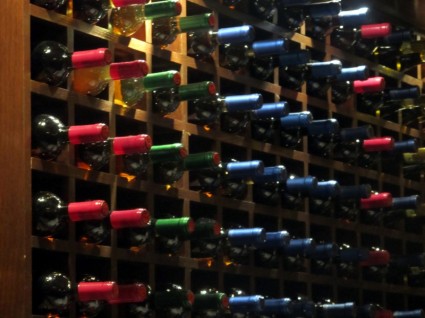
by Lorri | Sep 23, 2015 | UnCorked
Wine collecting is a personal endeavor. Some see collections as exclusive works of art while others see them as simply bottles of wine they can’t wait to share with friends. For others the wines are tokens of cherished memories from a winery visit or vacation.
It is not uncommon to hear of wines being sold for thousands of dollars, such as the six magnums of 1945 Mouton Rothschild that sold for a staggering $100,000 a few years ago. But the average wine drinker is not looking to buy for profit or investment, but seek bottles that will provide the most enjoyment.
The most important thing to remember is that most wines are not intended to age. As many as 95 percent of the wine produced is meant to be consumed within 2 to 5 years of bottling, leaving very few wines that will improve with longer cellaring. It is also worth noting that the wines that do benefit from extended aging are among the most sought-after wines in the world, making them out of reach for all but a select (and very wealthy) few.
If you are thinking of starting a collection, an important step to smart collecting is finding a local wine retailer who understands your desires for collecting and cellaring. This is crucial so that you are kept informed of stellar wines entering the market and when they will become available. Then take the time to consider your reasons for adding to your collection. Collecting does not necessarily require long cellaring. Are you looking for everyday drinking wines or for wines that you would like to taste as they gradually change over the years. Finding expert assistance and having a clear idea of the kinds of wines you’d like to collect will help you create a much more personal and rewarding collection.
THE VALUE
- 2011 Amor Fati, California (about $59 retail)
THE SPLURGE
- 2011 Vineyard 7 & 8 Estate Cabernet Sauvignon Spring Mountain, California (about $130 retail)
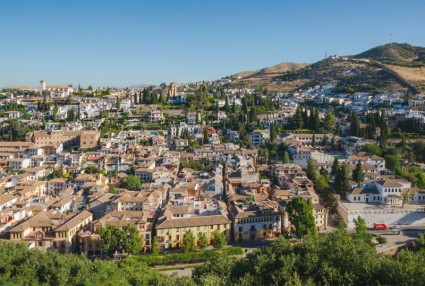
by Lorri | Sep 16, 2015 | UnCorked
Many Spain wine regions are offering dynamic wines that are a delight to explore. The styles range from spicy, berry-rich powerful reds to light, fresh whites and of course the sparkle of cava. This wide range in offerings includes some of the world’s best value priced wines.
In the past, Spain’s world-class wines came mainly from the Rioja region, a region many wine drinkers find familiar. But today, quality Spanish wines are being produced in Ribera del Duero and Catalonia. In addition, many Rioja producers are shaking things up and proving that Spain is one of the most progressive Old World wine-producing countries in the world.
In the past couple of weeks I have been on an exploration of my own, tasting my way through an array of budget-friendly Spanish wines.
THE VALUES
- 2014 Terum Garnacha Aragon, Spain (about $10 retail)
- 2014 Montebuena Rioja, Spain (about $12 retail)
- 2014 Castillo de Monseran, Spain (about $8 retail)
- 2014 Las Rocas Garnacha, Spain (about $13 retail)
- 2013 Campo Viejo Rioja, Spain (about $13 retail)
- 2014 Ergo, Spain (about $12 retail)
- 2014 Ramon Bilbao Tempranillo, Spain (about $15 retail)
THE SPLURGES
- 2014 Bodegas Langa Pi White Garnacha, Spain (about $20 retail)
- 2013 Bodegas Langa Pi Concejon, Spain (about $20 retail)
- 2014 La Cana Albarino, Spain (about $19 retail)
- 2013 Volver Single Vineyard, Spain (about $20 retail)
- 2013 The Saint Rioja, Spain (about $17 retail)
- 2013 Cruz de Alba Crianza, Spain about $27 retail)
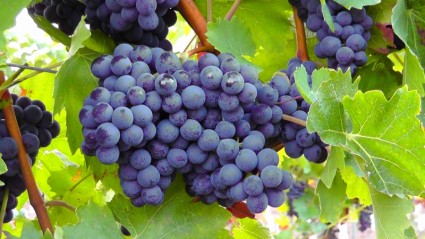
by Lorri | Sep 9, 2015 | UnCorked
Grenache (also known as garnacha) is often seen as an underdog. A grape that simply ends up in a great blend. We tend to overlook that it is a stand-alone varietal, even though it’s one of the most planted of wine grapes in the world.
It’s big, bold and aggressive, but also lovable, friendly and approachable.
Originally from Spain, this grape is widely grown in the southern Rhone region. It spread into France as the kingdom of Aragon expanded its borders. For many years this grape was only used as a blending partner, adding to the finesse of some of the greatest wines of the world. Most Chateauneuf-du-Pape and other Rhone wines are made from a blend using this grape. The average Chateauneuf contains about 10 percent syrah but 65 percent grenache. Today grenache are grown in Spain, Italy, France, California and Australia.
Continuing my promotion of rosé, it is worth noting that some of the best wine made of grenache is rosé. The Saignee Method is an old technique that transforms the grape from a full-bodied red wine to a rosé wine. Saignee is a French term meaning “bled,” referring to the process of running off or “bleeding” a certain amount of free-run juice (juice from freshly picked grapes that is released during the stemming process) using crushed dark-skinned grapes, after a short pre-fermentation maceration. The aim is primarily to produce a lightly pink wine with more flavor compounds.
THE VALUE
- 2013 Yellow Tail Grenache, Australia (about $8 retail)
THE SPLURGE
- 2013 D’Arenberg Custodian Grenache, Australia (about $20 retail)
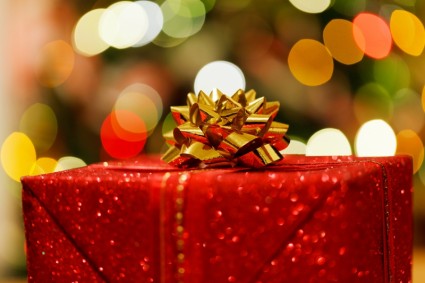
by Lorri | Sep 2, 2015 | UnCorked
I recently overheard an interesting conversation between a wine retailer and customer. The customer was looking for a nice bottle of wine to give as a gift. The two talked about regions and price, and the shopper said with confidence that he was searching for a Bordeaux wine.
(I admit I eavesdrop a lot in retail stores because I love to hear the questions consumers ask.) The next question was from the retailer: “Were you thinking right bank or left?” With this wine-speak question, of course, I had to sneak a quick peek and continue listening. And as would have been expected it was a term the customer was not familiar with concerning Bordeaux wines.
The term “left bank” versus “right bank” is an easy lesson in the sometimes difficult-to-understand language of French wines. It refers to the geography of the region. The main river in Bordeaux, the Gironde, passes through the core of Bordeaux’s most prestigious vineyards. There are two smaller rivers, the Dordogne and Garonne, that merge to form the Gironde. If you’re looking at a map, the left bank is south (or left) of the Garonne and the right bank is north (or right) of the Dordogne. (The area in the middle, the Entre Deux Mers, is mostly forest with only a handful of vineyards.)
Red wines make up almost 90 percent of wine produced in Bordeaux. Most red Bordeaux is blended from cabernet sauvignon, merlot, malbec, cabernet franc and petit verdot, but each grape thrives in different growing areas.
Most white Bordeaux is made of sauvignon blanc, semillon and muscadelle.
The left bank boasts regions such as Margaux and Pauillac. Cabernet sauvignon dominates this area because the vine demands well-drained, gravelly soils. Unlike some grapes, cabernet sauvignon does not grow well with its roots lying in soggy soil.
The right bank includes the regions Pomerol and St. Emilion, and is home to world-renowned wineries such as Petrus and Cheval Blanc. The soil of the right bank has more clay, leading to less drainage. In this soil, merlot and cabernet franc take the lead, and cabernet sauvignon plays a very small role. Merlot wines tend to be more fruit-forward and they mature earlier than many of the wines dominated by cabernet.
THE VALUE
- 2013 Chateau Pilet Bordeaux Blanc, right bank/Entre Deux Mers, France (about $13 retail)
THE SPLURGE
- 2012 Chateau Mongravey, left bank, France (about $50 retail)
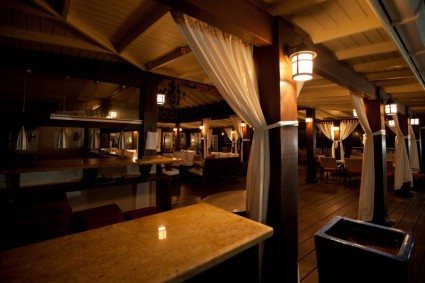
by Lorri | Aug 26, 2015 | UnCorked
When it comes to creating wine and food pairings at home, the key is keeping it simple. But restaurant menus are often more complex. In addition to menu interpretation, there’s the time issue as the server awaits your order.
Most fine-dining establishments offer wine and food pairing suggestions, but if you find yourself on your own, here are some tips for pairing wine with common menu items.
CHICKEN
It’s rare to find unadorned chicken on a restaurant menu, so for a successful pairing, consider the sauce and cooking method. A dish such as roast chicken with mushrooms in a Madeira sauce will call for a full-bodied red wine such as shiraz or a medium-bodied pinot noir.
THE VALUE
- 2014 Yalumba Y Series Shiraz, Australia (about $13 retail)
THE SPLURGE
- 2013 Schug Sonoma Coast Pinot Noir, California (about $24 retail)
FISH
When we think of wine and fish pairings, most of us think of white wines. But a dish like grilled halibut with garlic sauce is much more than mild white fish on a plate. For the ideal pairing, the cooking technique of grilling will add a much more earthy and smoky component. Because of the robust flavors the grill adds and the garlic in the sauce, consider merlot or pinot noir, if you’re in the mood for red. But as with most fish dishes, chardonnay is always a safe match.
THE VALUE
- 2014 BV Coastal Pinot Noir, California (about $12 retail)
THE SPLURGE
- 2013 Left Coast Cellars Pinot Noir, Oregon (about $24 retail)
SALAD
If one ingredient in a salad overpowers the others, match your wine to that ingredient. If there is shrimp, crab or tuna, a sauvignon blanc or rosé would pair best. Salads with meats follow the same as most dishes, keeping in mind a light red such as a pinot noir may be the better pairing. For a lettuce wedge with smoky bacon mustard dressing, pinot noir or rosé would be ideal.
THE VALUE
- 2014 Bell Sauvignon Blanc, California (about $17 retail)
THE SPLURGE
- 2014 Anne Amie Huntington Hill Rosé, Oregon (about $19 retail)





